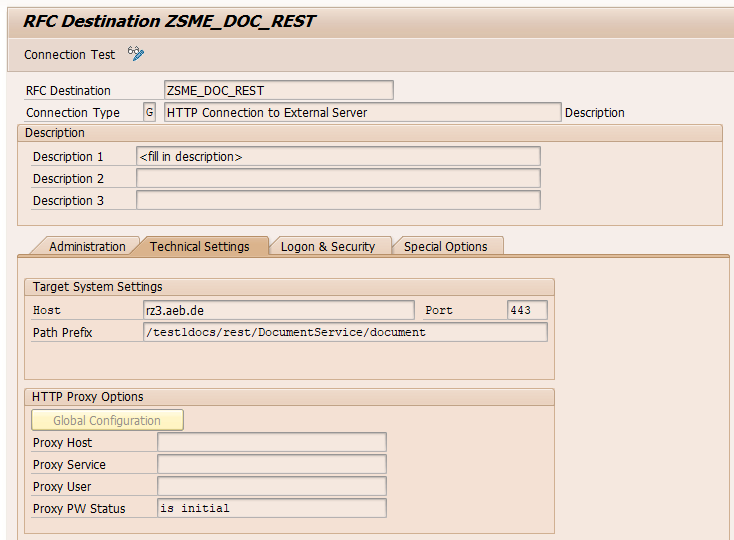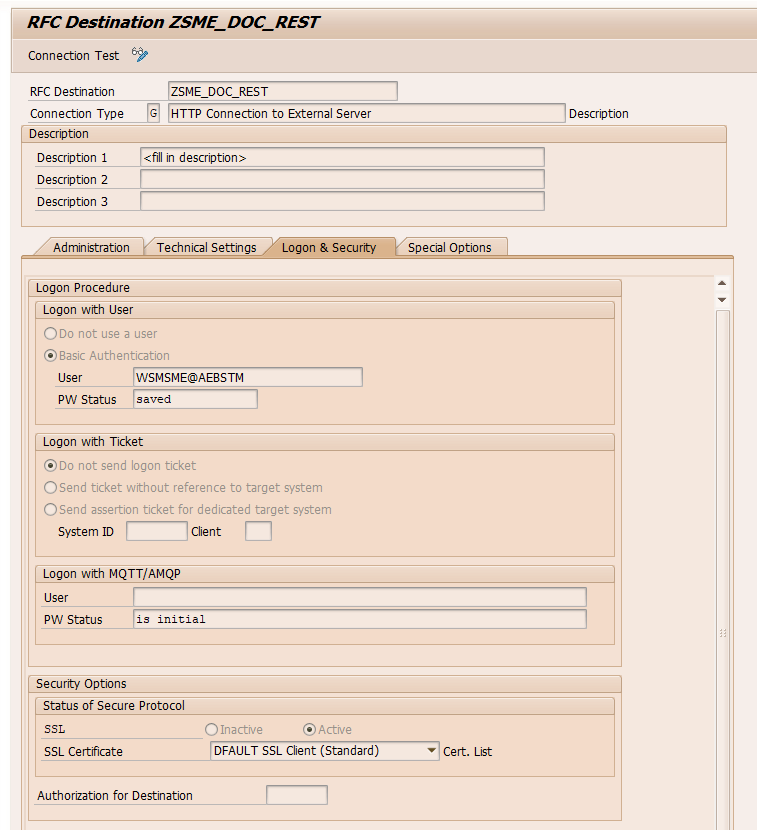Setting up your SAP environment (Document Service)
This documentation describes how to use the Document Service from SAP via REST
Credentials
Before you can start using the Document Service API, you need a client, a user and a password.
For testing you can use:
https://rz3.aeb.de/demo1docs/
Mandant(client): APITEST
User: API_TEST
PW: API_TEST2021
Set up the connection in SM59
First you must create a new connection type G in SM59.
Host: rz3.aeb.de
Port: 443
Path prefix: /test1docs/rest/DocumentService/document (this may be different depending on which instance your client runs)

In Logon & Security you enter the credentials in the pattern user@client with the required password and active the SSL client standard store.

Import certificates to STRUST
To enable a direct HTTPS connection between the SAP system and the AEB data center, you need to import the necessary SSL certificates. Please refer to this documentation how to do: https://rz3.aeb.de/docudata/inst-config-guides/customs-management/installconfig-customsmgmt-plug-insap/en-US/index.html#384034443391691019
Additional connection for Application facade
If you want to use the application facade of the Document Service (e.g. for the type write mode) you will have to set up a second connection with a different path prefix /test1docs/rest/DocumentService/ui/document (this may be different depending on which instance your client runs).
Updated 5 months ago